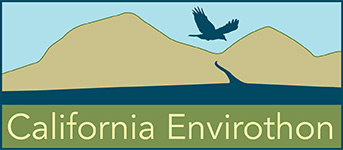2023 Webinars
Wildlife/Water “Beaver Believer: Climate Change Hero”
VIDEO – Beaver Believer: Climate Change Hero
The CAE Resources Advisory Panel plans and organizes a series of one-hour webinars related to the current issue “Adapting to a Changing Climate” for the student teams to learn more about the connections of the issue to the study topic areas of wildlife, aquatics, soils and forestry.
Academics and natural resource experts in the field will present their lectures via Zoom.
This is an opportunity for the teams to interact with them.
The Zoom link will be provided prior to the date of the webinar.
Study links for each webinar will be provided as background materials for teams to prepare.
The series will last through April 8.
Dr. Lynn Sweet, UC Riverside (presenter).
Ilima Segoviano, NRCS, Indio
(contact: [email protected])
Species profile:Joshua Tree | National Wildlife Federation (nwf.org)
National Park Article on JTNP & Climate Change:Climate Change – Joshua Tree National Park (U.S. National Park Service) (nps.gov)
Dr Sweet’s Research:Joshua Tree National Park Is More Popular Than Ever—But Its Namesake Trees Are Facing Extinction | Vogue
Dr Sweet’s Research:Study predicts sharp decline in Joshua trees, a key Mojave Desert species – Las Vegas Sun Newspaper
Dr Sweet’s Research:Joshua Trees Are Being Wiped Out by Climate Change (gizmodo.com)
This is an ecological research paper by Dr. Sweet and optional for study. PDF
Envirothon Wildlife Webinar: Monarchs
Presented by Frank Bradley, Ruby Stahel, and Erin Arnsteen 2/25/2023
Resources:
- Monarch Butterfly Conservation | Xerces Society
- Western Monarch Conservation | Xerces Society
- Western monarch call to action | Xerces Society
- Monarch Butterfly Biology (usda.gov)
- Life Cycle | The Monarch Joint Venture
- Habitat Needs | The Monarch Joint Venture
- Species Profile for Monarch butterfly(Danaus plexippus) (fws.gov)
- State and Federally Listed Endangered and Threatened Animals of California
- CESA to the Federal Endangered Species Act (ca.gov)
- Monarch FAQ_Nov2021.pdf
- Danaus plexippus ssp. plexippus (Migratory Monarch Butterfly) (iucnredlist.org)
- Scientific Collecting Permits (ca.gov)
- Insect decline in the Anthropocene: Death by a thousand cuts
- Western Monarch Population Plummets: Status, Probable Causes, and Recommended Conservation Actions
- Fewer butterflies seen by community scientists across the warming and drying landscapes of the American West (may not be publicly accessible)
- Here’s How America Uses Its Land
- Xerces Pesticide Website
- MJV Fact Sheet – “Risks of Neonicotinoid Use to Pollinators”
- Agricultural margins could enhance landscape connectivity for pollinating insects across the Central Valley of California, U.S.A.
Paige Prentice, formerly with California Department of Fish & Wildlife, currently at Oregon State University.
Anna Britzman, NRCS, Hollister
(contact: [email protected])
Bighorn Sheep Resources
Envirothon Wildlife Team 2022-23
Preparation for Webinar on 3/4/23 with Paige Prentice
1. Desert Bighorn Sheep – Joshua Tree National Park (U.S. National Park Service) (nps.gov)
– Description, habitat, food, activity, life history, conservation
2. Desert Bighorn Sheep – Species Distribution Model, DRECP | Data Basin
– Desert bighorn sheep potential habitat map
3. Monitoring Efforts (ca.gov)
– Monitoring efforts, capture methods, population surveys, and waterhole sits and cameras for bighorn sheep by CDFW
4. Desert Bighorn Sheep: Connecting a Desert Landscape (U.S. National Park Service) (nps.gov)
– Article with background on sheep biology, research information, and pictures
5. Featured Scientist | Paige Prentice (ca.gov)
– Background on Paige Prentice (presenter)
March 4 @ 2 pm: “The Importance of Wetlands for MIgratory Birds Along the Pacific Flyway” Tentative Speakers: Yolo Basin Foundation, Ducks Unlimited and the U.S. Fish & Wildlife Service (contact: Russell Huddleston, [email protected])
– Webinar March 4th @ 2PM – Wetlands and Migratory Bird
- Cliff Feldheim – Fish and Wildlife Biologist, Yolo Basin Foundation
- Tim Johnson – California Rice Commission – rice farming and waterfowl habitat
- Donna Ball – San Francisco Estuary Institute – south bay salt pond restoration project
April 8 @ 1-2 pm: “The Effects of Climate Change on California Fisheries”
Presenter: Cliff Feldheim, Senior Project Manager, Cal Trout
Host/Contact: Russell Huddleston, Ecologist, U.S. Environmental Protection Agency ([email protected])
Resources:
Impacts of climate change for coastal fishers and implications for fisheries
Small-scale fisheries under climate change in the Pacific Islands region
Observations of climate change among subsistence-oriented communities around the world
Use of traditional environmental knowledge to assess the impact of climate change on subsistence fishing in the James Bay Region of Northern Ontario, Canada
April 8 @ 2:30 pm: Examining Harmful Algal Blooms (HABs) through the Lens of Climate Change
Host: Zoe Chan, US EPA, San Francisco([email protected])
Presenters and Study Resources
-
Yeana Kwagh, US Environmental Protection Agency: General overview of harmful algal blooms and potentially provide insight to EPA’s HABs programs.
-
http://climate.org/wp-content/uploads/2017/05/bennett_algalblooms-1.pdf
-
https://www.sciencedirect.com/science/article/pii/S1568988319300344
-
Katie Noonan, Rotary Nature Center Friends and Lake Merritt Institute: Sharing her experiences as a water quality monitor and educator at Lake Merritt that has become such a fascinating case study.
-
https://oaklandside.org/2022/10/25/after-fish-die-off-life-returns-to-lake-merritt/
